As we state on our site’s about page, here at Tools & Toys we aim to be more than just a “cool stuff” site. In addition to pointing your attention to items that are new and/or awesome, we also promote the idea of being mindful and intentional of our consumption habits and our lifestyles.
To that end, as part of our ongoing series, Books to Make You a Better Human, I’ve assembled a list of books to help you be a more mindful person. Whether you want to improve your daily interactions with people, the products you make, or your general philosophy about life, you’ll find a book here to guide you on the right path.
Enjoy.
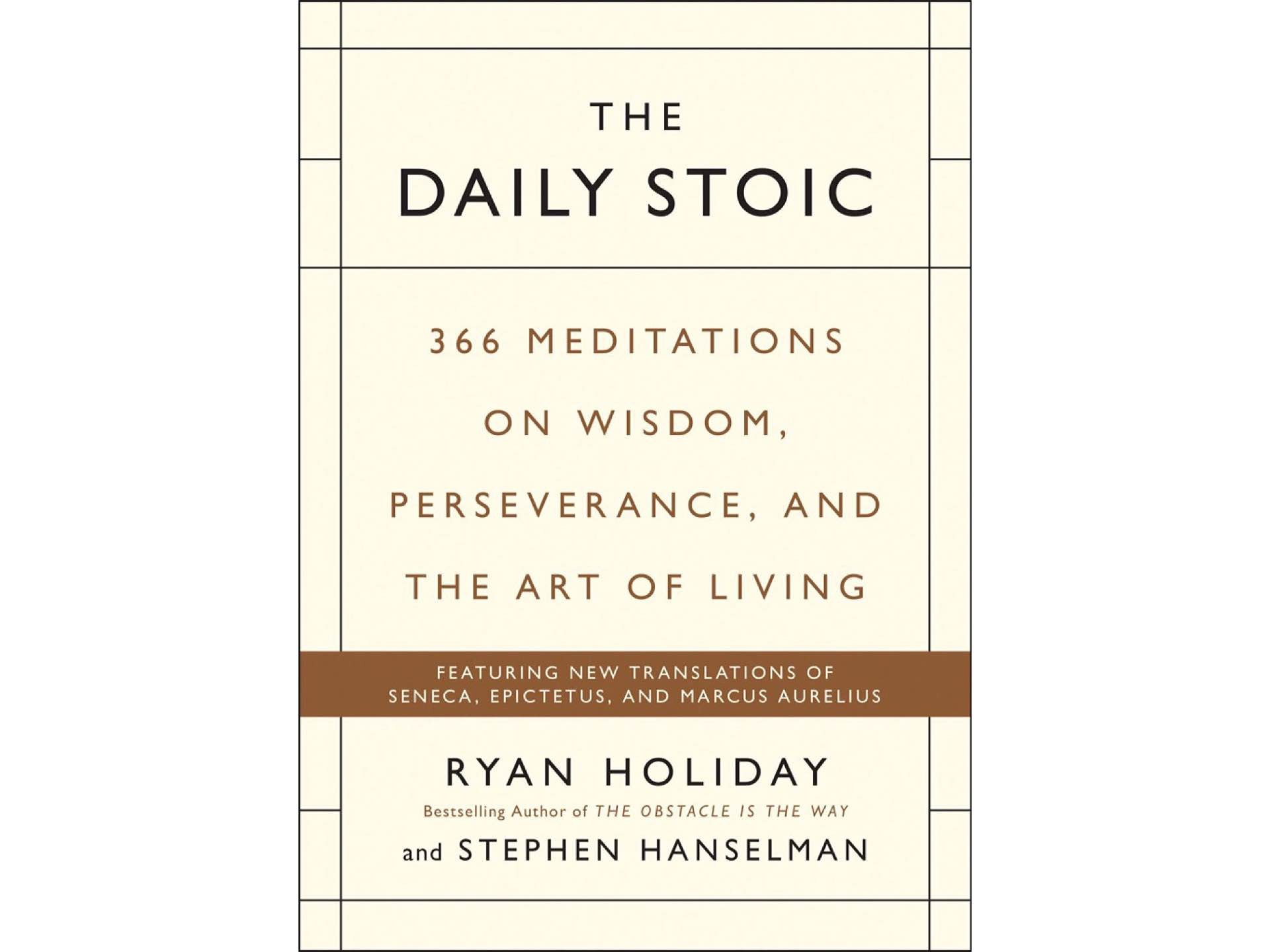
The Daily Stoic by Ryan Holiday.
The Daily Stoic: 366 Meditations on Wisdom, Perseverance, and the Art of Living »
Ryan Holiday is the best-selling author of several stoicism-inspired books like The Obstacle is the Way and Ego is the Enemy. His most recent work is The Daily Stoic, which features all-new translations of the Stoics (such as Marcus Aurelius, Epictetus, and Seneca), as well as hundreds of new stories, anecdotes, and exercises to help readers live better. It’s a guide to modern living through the lens of ancient philosophy.
From the description:
Every day of the year you’ll find one of their pithy, powerful quotations, as well as historical anecdotes, provocative commentary, and a helpful glossary of Greek terms.
By following these teachings over the course of a year (and, indeed, for years to come) you’ll find the serenity, self-knowledge, and resilience you need to live well.
Get the book in these formats:
- Kindle ($13)
- iBooks ($13)
- Hardcover ($15)
- Audible audiobook ($10)
If you read through Holiday’s books and still want more on stoicism, you might check out Tim Ferriss’ audiobook, The Tao of Seneca.

Unsubscribe by Jocelyn K. Glei.
Unsubscribe: How to Kill Email Anxiety, Avoid Distractions, and Get Real Work Done »
Sometimes being mindful is about considering how we use the tools in our life, particularly those that help us interact with other people. And let’s face it, email as a concept is broken. It’s a huge drain on our efficiency and creativity, and yet we’re all as addicted to it as ever. Many books on the topic are typically high-level and abstract, without much in the way of practical, real-world advice.
Jocelyn K. Glei’s book, Unsubscribe, aims to fix that. It’s a no-nonsense blend of practical tips, ideas, activities, and advice to help you reclaim your productivity and spend more time on work that actually matters rather than have your life consumed by others’ agendas.
The tips include:
- Detox: Break free from email addiction by understanding the psychology of reciprocity, completion bias, and the asker’s advantage.
- Focus: Create habits that will help you minimize distractions and focus more energy on meaningful work.
- Prioritize: Learn how to email smarter, faster, and less by prioritizing what really matters—your goals, your agenda, your people.
- Provoke action: Master the art of writing emails that get people to pay attention, take action, and like you as a human.
- Hit send: Jumpstart your messages with word-for-word scripts on pitching new clients, negotiating fees, and delivering criticism.
And not only is the cover lovely to judge by, there are also lots of fun illustrations by Portugese artist Tomba Lobos throughout the book:
This is just a super fun and engaging read, and if you’ve been struggling with email, it will really help you.
Get the book in these formats:
- Kindle ($10)
- iBooks ($10)
- Paperback ($9)
- Audible audiobook ($12)
- Audiobook (CD) ($10)
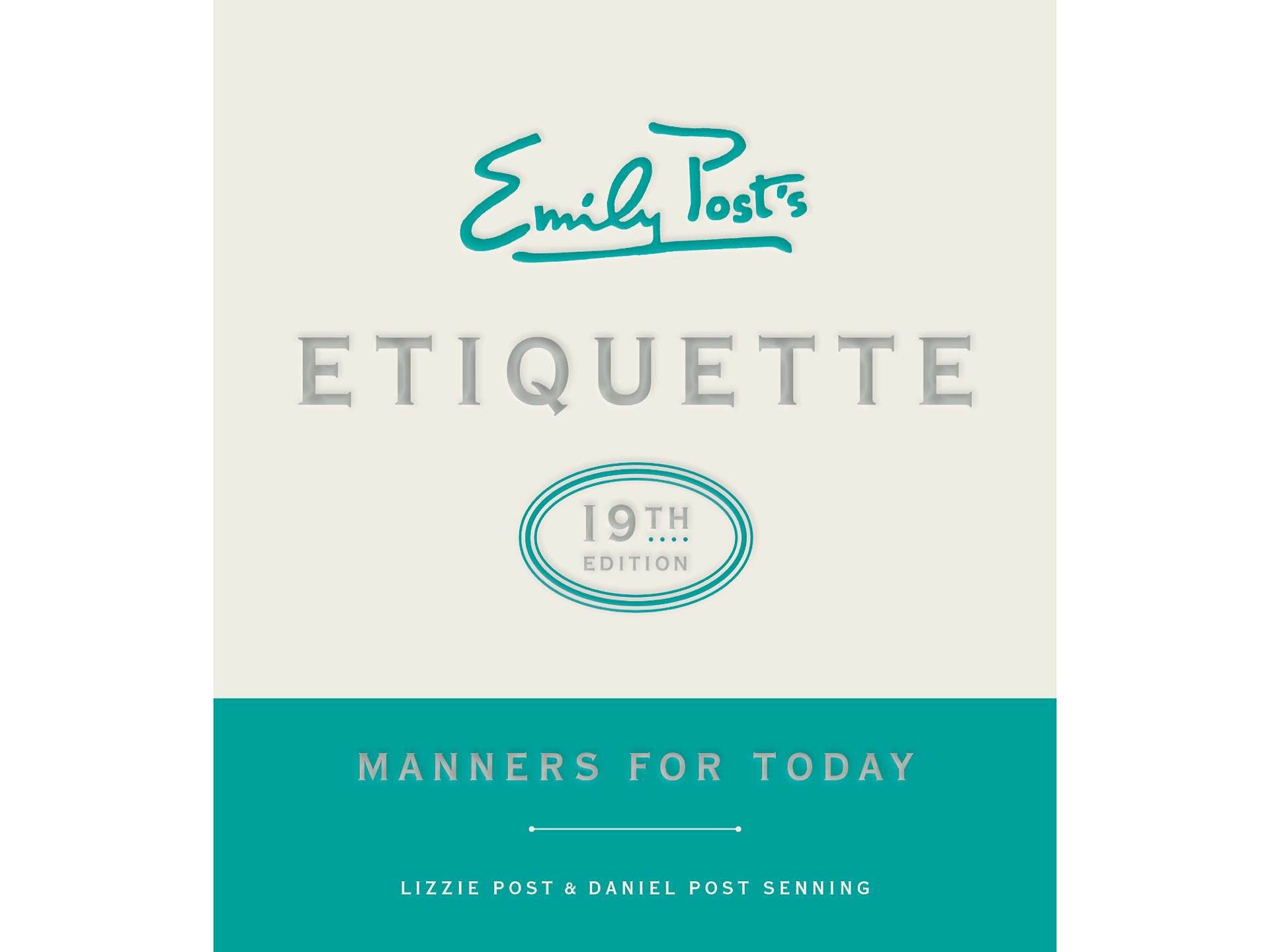
Emily Post’s Etiquette (19th edition) by Lizzie Post and Daniel Post Senning.
Emily Post’s Etiquette, 19th Edition: Manners for Today »
Emily Post’s Etiquette is a book written by cousins Lizzie Post and Daniel Post Senning of the Emily Post Institute, who happen to be the hosts of one of my favorite podcasts, Awesome Etiquette.
In this 19th edition of a book originally published by their great-great-grandmother in 1922, the latest generation of Posts tackle etiquette in the modern world, along with updates to classic conundrums, including:
- Weddings
- Invitations
- Loss, grieving, and condolences
- Entertaining at home and planning celebrations
- Table manners
- Greetings and introductions
- Social media and personal branding
- Political conversations
- Living with neighbors
- Digital networking and job seeking
- The workplace
- Sports, gaming, and recreation
From the description on their site:
It’s been six years since the last edition of Emily Post’s Etiquette, but in navigating our fast-paced, stressed-out world the principles of good manners remain constant. Whether it’s appropriate political conversation, guidelines for polite smartphone use, or how to handle dinner guest’s myriad dietary restrictions, choosing to apply the best practices of etiquette enhances every interaction.
[…]
Written in a conversational tone with updates to reflect the impact of technology and devices on the ways we interact, this edition is more timely and relevant than ever.
Get the book in these formats:
Another great book from the Emily Post Institute that we’ve read and loved: Essential Manners for Men by Peter Post.
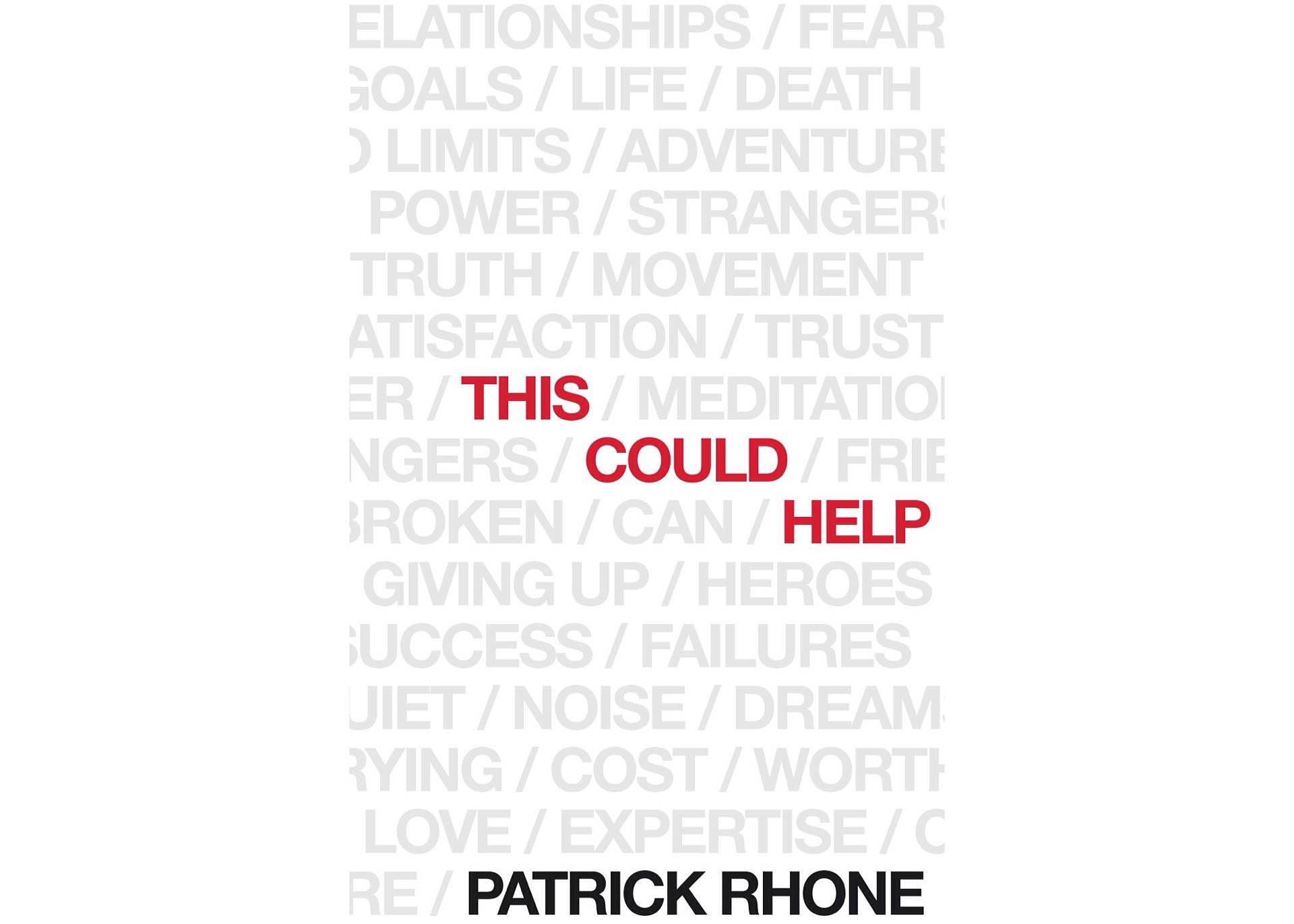
This Could Help by Patrick Rhone.
This Could Help »
Our friend and fellow writer Patrick Rhone is the kind of guy who has a lot of thoughtful insights about the world, and conveys them in a most calming manner. His book, This Could Help, is a collection of nearly 100 essays based on those sorts of insights.
There is no particular theme to the book, other than that just about anyone can find at least one thing within that will help them on their journey — whether they’re struggling in a relationship, job, creative endeavor, or something else. I realize this is a somewhat vague description so far, so here is an excerpt from the book that struck us particularly, a short essay titled Shaping the Light:
Think about a lightbulb. Soft, white, diffused light. It speeds in all directions, illuminating the room. Unfocused.
Now, place a mirrored cup around that same light, point the cup’s opening at a specific point, and now you have a spotlight. Focused in one direction.
Now, start to constrain that opening. Shape it as a cone. Make the opening smaller and smaller and you’ll have a beam. Perhaps, if done correctly, a beam powerful enough to burn a hole in any object it is directed at. Like a magnifying glass to a leaf. Extreme focus.
It’s the same energy. Just shaped in different ways. And, once shaped, its strength, intention, ability, and purpose is changed.
This is you. This is your time. This is your attention. This is your energy.
The same energy that you currently spread amongst the many tasks you are now doing, can be focused to put a real, deep, burning, hole right in the center of the one thing you should be doing.
Get the book in these formats:
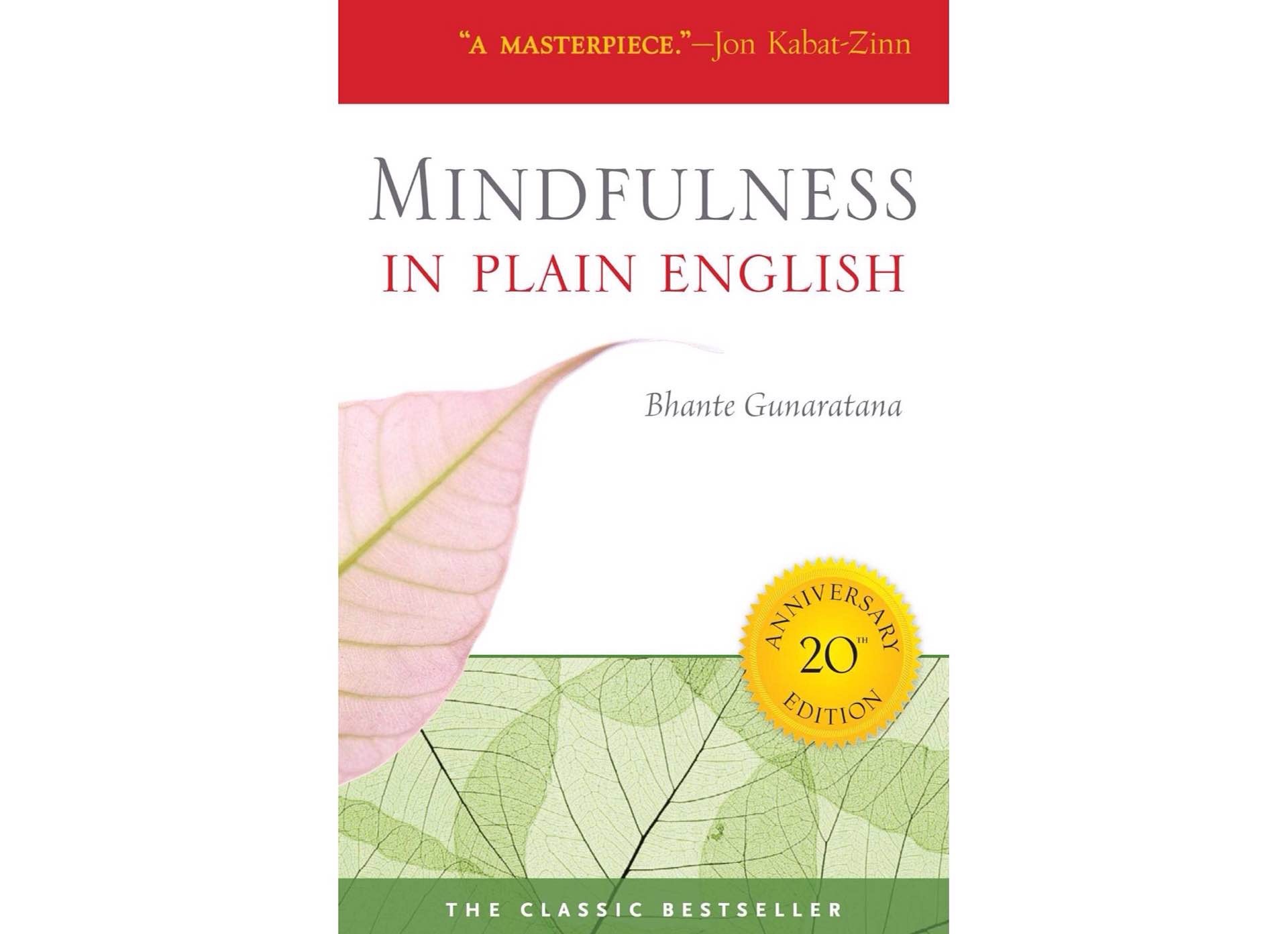
Mindfulness in Plain English by Bhante Gunaratana.
Mindfulness in Plain English »
Meditation has a long history as one of the world’s greatest relaxation techniques. Unfortunately, it can be a surprisingly hard habit for beginners to take up.
Mindfulness in Plain English — written by Henepola “Bhante G” Gunaratana, a Theravada Buddhist monk from Sri Lanka — is exactly what the book title suggests: A straightfoward, practical guide to meditation and mindfulness.
When we say “practical”, we mean it. Not only does Gunaratana guide readers through the basics of meditation and why it can be an important practice in today’s manic world (whether you’re Buddhist or not), he even addresses common issues people face during meditation, such as sudden boredom or irritation, and even legs that fall asleep.
Here are a couple excerpts taken from separate parts of the book, yet together sum it up nicely:
You can’t make radical changes in the pattern of your life until you begin to see yourself exactly as you are now. As soon as you do that, changes will flow naturally. You don’t have to force anything, struggle, or obey rules dictated to you by some authority. It is automatic; you just change. But arriving at that initial insight is quite a task. […]
Through the process of mindfulness, we slowly become aware of what we really are, down below the ego image. We wake up to what life really is. It is not just a parade of ups and downs, lollipops and smacks on the wrist. That is an illusion. Life has a much deeper texture than that if we bother to look, and if we look in the right way.
Get the book in these formats:
- Kindle ($13)
- iBooks ($13)
- Paperback ($14)
- Audible audiobook ($12)
- Audiobook (CD) ($10)
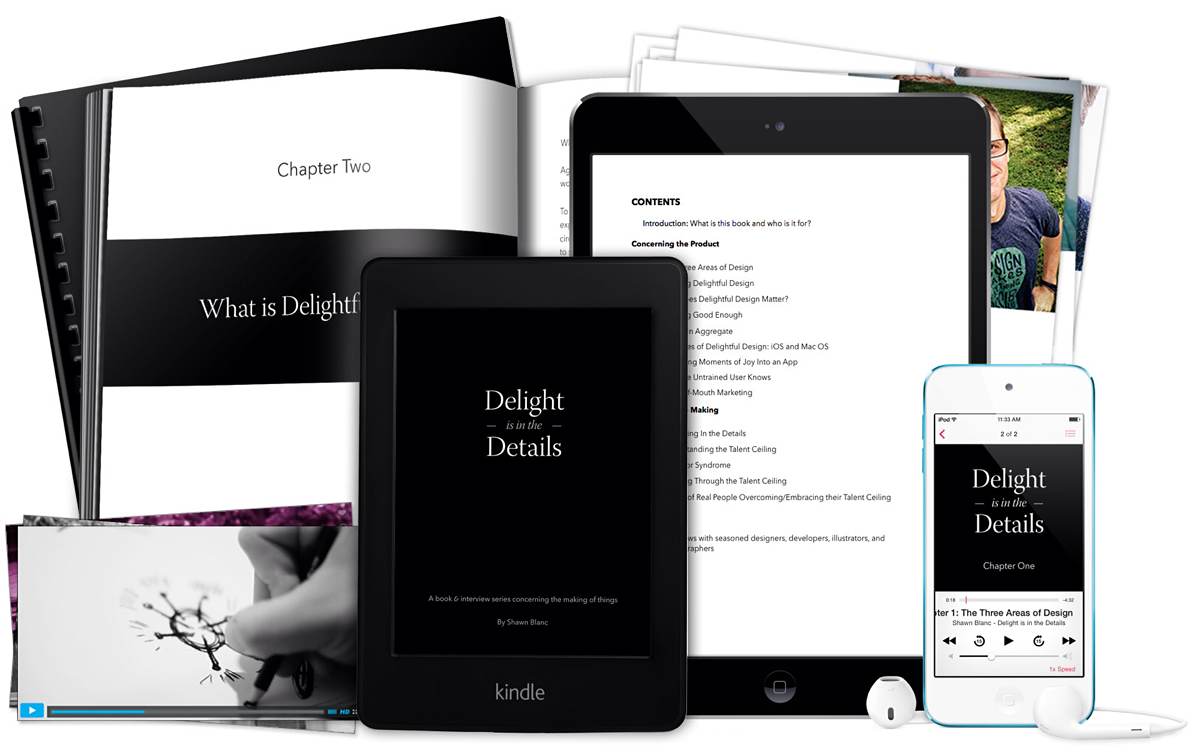
Delight is in the Details by Shawn Blanc.
Delight is in the Details »
Like the email book we mentioned earlier, the idea of being more mindful can include things you might not expect — in this case, being mindful of little details in the things we make.
Written by our own fearless editor-in-chief Shawn Blanc, Delight is in the Details is an ebook, audiobook, and interview series for creative people who make things. The focus is on addressing the finest goal a person in our industry can have: to create substantive work that delights and excites our audience. To that end, this book bundle contains ten audio interviews with such creative luminaries as Marco Arment, Federico Viticci, Cameron Moll, Matt Alexander, and more.
Get the book in these formats:
- The Complete Kit ($45) — Includes ebook, audiobook, audio interviews, HD videos, and more.
- Ebook only ($29) — Also includes two of the eight “Makers Q&A” sessions from The Complete Kit.
If you enjoy the books in this guide, you’ll probably also dig the selections from one of our previous ones: “Books to Make You a Better Writer.”

